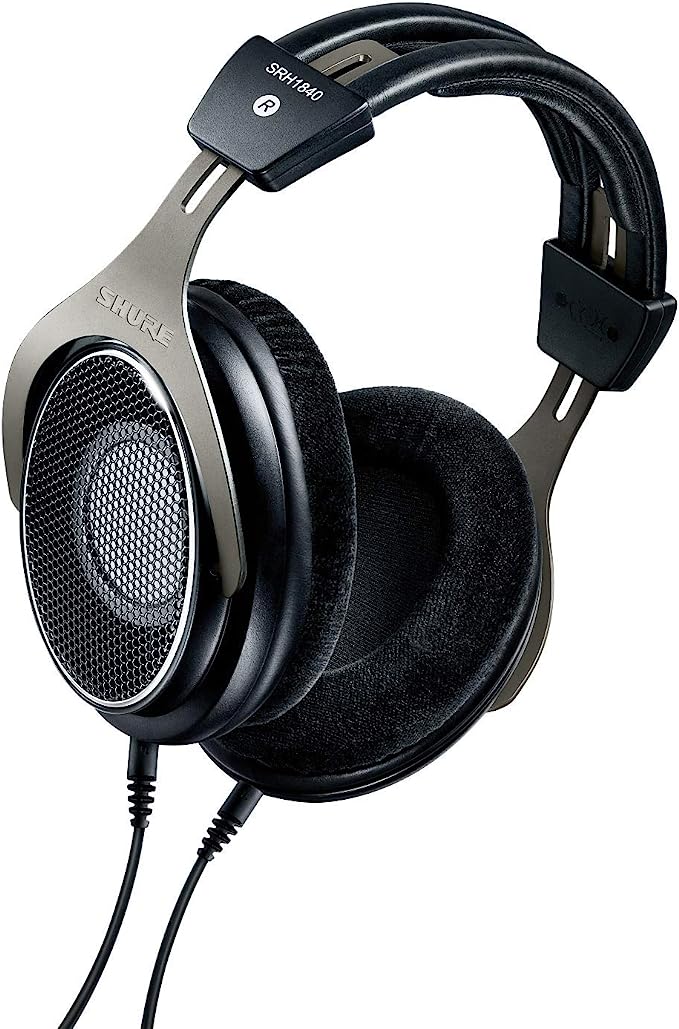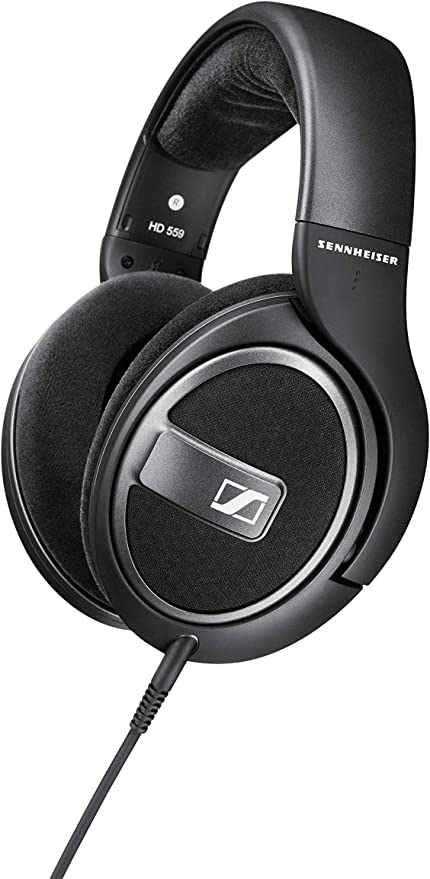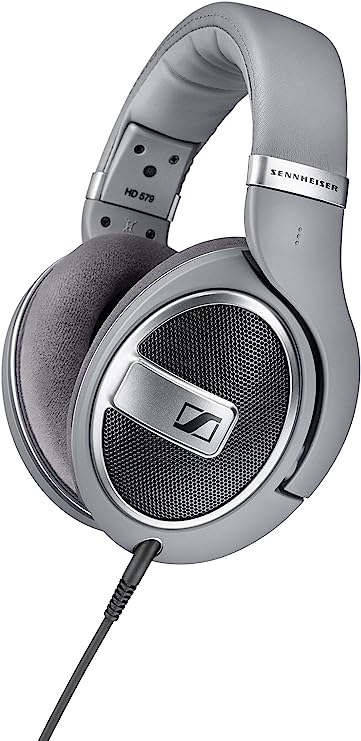Decoding the Open-Back Headphone: A Guide to Your First Audiophile Steps
Update on Nov. 14, 2025, 10:06 a.m.
If your entire listening life has been spent with earbuds or consumer-grade wireless headphones, your first encounter with a true “audiophile” headphone can be… confusing.
A wealth of user experiences confirm this. “When I first put these on I was very disappointed,” one user admits. Another states, “First listen terrified me, the sound was muddy and boomy, but after a little break in they opened up.”
This is the “audiophile paradox.” When you’re used to headphones that are engineered to sound “fun” (with thumping, exaggerated bass), a headphone engineered for accuracy can sound flat, “boring,” or “anemic” by comparison.
But as that first user concluded, “as I continued to listen… I began to appreciate their sound.”
This is a guide to that transition. Using the Sennheiser HD 599 SE—a “must-have” gateway into audiophile territory with over 7,900 high ratings—we’ll decode the two key engineering principles you must understand: the open-back architecture (what creates “soundstage”) and the “balanced” sound signature (what creates “clarity”).

1. The Architecture: Why “Open-Back” Creates “Soundstage”
The single biggest difference between consumer headphones and an audiophile headphone like the HD 599 SE is the open-back design.
The Closed-Back Problem (What You’re Used To) * The Physics: A standard headphone has a solid plastic shell. When the driver (speaker) pushes sound towards your ear, it also pushes sound backwards into this sealed cup. This soundwave has nowhere to go. It reflects off the cup wall and travels back to your ear, milliseconds late. * The Result: This “back-wave” interference creates distortion, muddy or “boomy” bass, and a “claustrophobic” feeling. The music sounds like it is trapped inside your head.
The Open-Back Solution * The Physics: The HD 599 SE has a grille on the outside, not a solid wall. This is a deliberate engineering choice. It allows the driver’s entire back-wave of sound to vent out into the room, harmlessly. * The Result: The sound that reaches your ear is “clean,” free of that internal resonance. This non-pressurized, open design mimics the way we hear speakers in a real room. Your brain interprets this as a massive, three-dimensional “soundstage.” As one user (“Ju-Miao Cheng”) experiencing this for the first time put it, “I don’t think I’ve experienced a wide sound stage before… Really like that openness… alot.”
The Non-Negotiable Trade-Off: This design is a two-way street. Just as sound gets out, all sound gets in. As one reviewer (“Hinkydoo”) correctly warns, “These are not appropriate for public places. Likewise, you will hear everything around you.” This is not a flaw; it is the feature. These are for quiet, private listening only.

2. The Psychoacoustics: E.A.R. (Ergonomic Acoustic Refinement)
Sennheiser doesn’t just rely on the open-back architecture. They use a proprietary design called Ergonomic Acoustic Refinement (E.A.R.).
This is a brilliant feat of psychoacoustics. Instead of placing the speaker driver flat against your ear, the drivers inside the earcup are angled.
Why? Your outer ear (the pinna) is shaped to help your brain determine a sound’s location. Sound from in front of you sounds different than sound from the side. The E.A.R. design angles the drivers to “fire” sound at your ear in a way that mimics a pair of high-quality stereo speakers sitting in front of you.
This simple, physical tilt tricks your brain into perceiving a more natural, “out-of-head” soundstage. For gaming, this provides “superb” and accurate instrument placement. For music, as one user (“Allen D. Reinecke”) said, “I felt like… I was in a room with the musicians.”
3. The Sound: “Balanced” vs. “Boomy” (The X2HR Comparison)
This brings us to the “first listen disappointment.” Most consumer headphones have a “V-shaped” or “smiley-face” tuning—the bass and treble are cranked up. It’s fun, but it’s not accurate.
The HD 599 SE is “balanced” (or “neutral with a hint of coloration”). Its goal is to let you hear the music as the artist intended. A powerful user review (“Ju-Miao Cheng”) describes this perfectly by comparing the HD 599 SE to its main rival, the Philips X2HR.
- On the Philips X2HR: “definitely a boomier bass… X2HR, bass does cloud the instruments.”
- On the Sennheiser HD 599 SE: “Audio is very balanced… The instruments sounds much clearer.”
This is the essence of the audiophile “upgrade.” You are trading skull-shaking, “muddy” bass for clarity and detail. You begin to hear the texture of the bass guitar string, not just the “boom.” This clear, low-distortion sound is a hallmark of the aluminum voice coils in Sennheiser’s transducers, which are lighter and stiffer than traditional copper, allowing them to stop and start with more precision.

The Foundation: Comfort and Power
Finally, a “serious listening” session can last for hours. This is where the HD 599 SE’s design truly shines. * Comfort (5-Star): It’s “super comfy” and “lightweight.” The “luxurious velour covered ear pads” are a key feature. Unlike “leatherette” (plastic), velour is breathable, meaning your ears don’t get “hot or sweaty” (“Ju-Miao Cheng”). * Power (Easy to Drive): “Audiophile” gear is often “high-impedance,” requiring expensive amplifiers. The HD 599 SE is engineered for the modern listener.
The Engineer’s Notebook: Specs Decoded
- Impedance: 50 Ohms. This is low. It means the “pipe” is wide.
- Sensitivity: 106 dB. This is high. It means the “pump” is efficient.
The Translation: This is a crucial design choice. It means you do not need an amp. As one user (“Cesar Camarena”) confirmed, “out the box and plugged into your phone these are a joy.” They can be driven easily by a laptop, phone, or console controller.
Coda: Your Invitation to Listen
The Sennheiser HD 599 SE is not just a headphone; it’s an educational tool. It is, as 7,952 reviews attest, the perfect “entry to audiophile territory.”
It is engineered to teach you what “soundstage” means. It forces your brain to recalibrate away from “consumer bass” and appreciate “balanced” clarity. And it does this while being one of the most comfortable headphones on the market, with “superb” build quality that can last “11 or 12 years,” as one user reported.
It’s the ultimate “first step” for someone who is ready to stop just hearing their music and start truly listening to it.


































